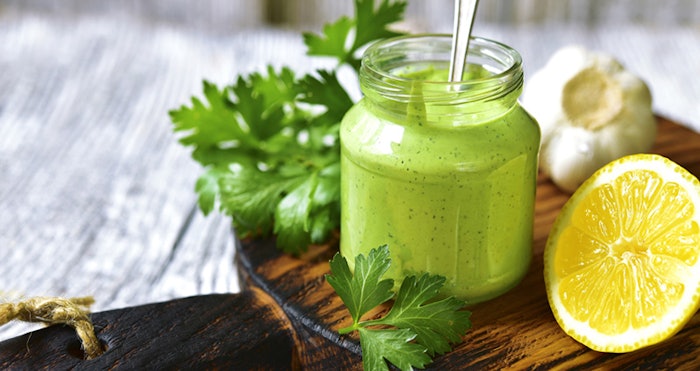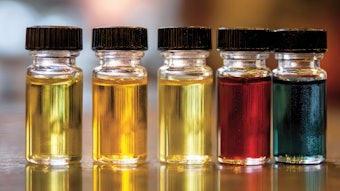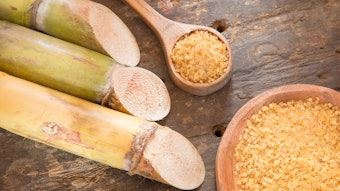
Originating in China around the first century B.C., citrus was a bridge from East to West, where aromatic varieties were introduced to the world as both a zesty flavor and an immunity boosting medicine. With its history rooted in Asia, citrus fruits today have reached all corners of the world. Home to over 25 citrus varieties, Japan’s citrus offers diverse profiles for the global consumer. As part of T. Hasegawa’s flavor development program, Bridge to Tokyo, flavor experts traveled to Japan to unearth new varieties specific to Japan with hopes to translate these flavors to the Western market. As a result, T. Hasegawa introduces its latest FEMA GRAS exotic citrus portfolio, which features the complex and adaptable profiles of yuzu, sudachi, natsumikan, mikan, kabosu, shikuwasa, iyokan and hassaku.
Citrus: The Bridge from East to West
Victoria Dorkoski, Junior Flavor Chemist, Sweet and Beverage, led the conversion of the Bridge to Tokyo Project with the THco team in Japan. “Citrus’ versatility extends beyond traditional products and into snacks, ready-to-eat noodles, confections and chocolates. It’s up to us to figure out the best application for each and educate our customers,” said Dorkoski.
The inspiration behind the selection was inspired by Japanese cuisine and T. Hasegawa’s daily flavor creations. “Mikan, iyokan, natsumikan and hassaku [are selected] as citrus that Japanese people often eat as they are. Yuzu, kabosu, sudachi and shikuwasa can be used for relish and vinegar due to their unique sourness and smells to enjoy while they are usually not consumed as they are,” explains Yuji Oda, Flavor Chemist, Flavor Institute, THco R&D.
Flavor Profiles and Certifications

Iyokan’s sweet and sour profile can be used as an alternative to orange in confectionery and dessert; while kabosu’s mild juiciness with a slight metallic note is an ideal replacement for lime in fish and meats. Hassaku is characterized by its crisp, fresh floral and grapefruit-like notes. A common edible citrus fruit, mikan’s fresh, sweet and juicy character is ideal for the North American palate. Natsumikan is slightly bitter, sour and juicy, which can make the perfect accompaniment for dessert and herbal sparkling beverages. The most popular Japanese citrus, yuzu, offers a fresh, aromatic and juicy character. Similar to yuzu, sudachi exhibits a green note with a touch of spice. Shikuwasa offers a tropical note with juiciness.
Essential oils in Japan are rare to commercialize and currently T. Hasegawa offers yuzu with natural flavors with other natural flavors (WONF) and kosher certifications; while kabosu and sudachi essential oils are expected to be made into kosher and WONF. These flavors are also offered in water soluble, oil soluble and spray dry delivery. “We wanted to make them with our own spin and more palatable for US consumers,” Dorkoski says of the portfolio.
Marketing to a Global Consumer
![According to Mintel, demand for Japanese food increased in the United States by 19.1% between 2015-2018; and with the anticipation of the Tokyo 2021 Olympics, Japanese flavors and cuisine are anticipated to reach a wider audience across the globe. Citrus as a staple flavor offers complexity and authenticity across all categories worldwide. “Citrus that can be enjoyed for its sourness and aroma enables us to put unique accents on culinary areas, which could be other options than lemon and lime. And we believe [Japanese] citrus can be applicable not only for beverages but also for jam, sweets, confectioneries and dressings,” explains Yuji Oda, Flavor Chemist, Flavor Institute, THco R&D.](https://img.perfumerflavorist.com/files/base/allured/all/image/2020/10/gci.TH_PF2010_image2.png?auto=format%2Ccompress&fit=max&q=70&w=400) According to Mintel, demand for Japanese food increased in the United States by 19.1% between 2015-2018; and with the anticipation of the Tokyo 2021 Olympics, Japanese flavors and cuisine are anticipated to reach a wider audience across the globe. Citrus as a staple flavor offers complexity and authenticity across all categories worldwide. “Citrus that can be enjoyed for its sourness and aroma enables us to put unique accents on culinary areas, which could be other options than lemon and lime. And we believe [Japanese] citrus can be applicable not only for beverages but also for jam, sweets, confectioneries and dressings,” explains Yuji Oda, Flavor Chemist, Flavor Institute, THco R&D.
According to Mintel, demand for Japanese food increased in the United States by 19.1% between 2015-2018; and with the anticipation of the Tokyo 2021 Olympics, Japanese flavors and cuisine are anticipated to reach a wider audience across the globe. Citrus as a staple flavor offers complexity and authenticity across all categories worldwide. “Citrus that can be enjoyed for its sourness and aroma enables us to put unique accents on culinary areas, which could be other options than lemon and lime. And we believe [Japanese] citrus can be applicable not only for beverages but also for jam, sweets, confectioneries and dressings,” explains Yuji Oda, Flavor Chemist, Flavor Institute, THco R&D.According to Mintel, consuming world cuisine offers a substitute for travel, encourages experimentation and it’s easy on the wallet as an affordable excitement. T. Hasegawa’s varieties offer a new twist to the traditional sweet and tart citrus flavors that are popular in the U.S. “The aroma of the Japanese varieties is close enough to the well-known citrus fruits like lemon, lime, orange and tangerine; but they offer a characterizing aroma profile that clearly distinguishes them from the traditional fruits,” says Ibrahima Faye, Senior Flavor Chemist. As consumers continue to experience a stronger desire to travel during quarantine, authentic and functional ingredients with engaging stories can quell the frustrations of staying put.
Yuzu Opens Up Japanese Citrus to the World
 One of the citrus materials that FEMA GRAS 28 released in its updated list was yuzu, a tart and fragrant citrus. The most popular Japanese citrus flavor in sweet and culinary applications, yuzu has become a mainstay in Western cuisine. “We have used yuzu most often in dressings, vinaigrettes, and also in frostings and yogurt preps. It has a very versatile flavor profile,” says Holden Rouse, Beverage Applications Technologist. Over the last several years, Western chefs featured yuzu as an aromatic and flavorful ingredient in Japanese-inspired dishes; while consumer packaged foods companies featured yuzu in sweets, sauces, vinegars and RTD beverages. “Yuzu, for example, has an intensely aromatic character, with sweetness and tartness. If you blend it with mint, it gives a good refreshing beverage,” Rouse advises.
One of the citrus materials that FEMA GRAS 28 released in its updated list was yuzu, a tart and fragrant citrus. The most popular Japanese citrus flavor in sweet and culinary applications, yuzu has become a mainstay in Western cuisine. “We have used yuzu most often in dressings, vinaigrettes, and also in frostings and yogurt preps. It has a very versatile flavor profile,” says Holden Rouse, Beverage Applications Technologist. Over the last several years, Western chefs featured yuzu as an aromatic and flavorful ingredient in Japanese-inspired dishes; while consumer packaged foods companies featured yuzu in sweets, sauces, vinegars and RTD beverages. “Yuzu, for example, has an intensely aromatic character, with sweetness and tartness. If you blend it with mint, it gives a good refreshing beverage,” Rouse advises.“As a flavorist, I’m always looking outside the box. From the raw materials, I find profiles similar to fruits which I don’t expect to find in citrus,” Faye continues. Most of T. Hasegawa’s citrus varieties offer a refreshing element in carbonated beverages, which often use natural ingredients with less-sweet flavor profiles. With the rise of yuzu’s prominence on the label, Dorkoski hopes newly certified kabosu and sudachi can be labeled in RTD and RTE products as well. “I hope to see kabosu and sudachi on labels soon. There are some delightful uses with these products outside of beverage; particularly in savory,” she adds. “With an herbal and green profile and a subtle savory background, kabosu is ideal for tea beverages, however its mysterious savory note on the back of the tongue along with a hint of candy and green notes gives kabosu an ideal home in sweet beverages with lemon or lime, but makes for a delicious addition to desserts.”

Consumers continue to rely heavily on immunity boosting ingredients and global cuisine, particularly during economic uncertainty and a global pandemic. Taking a trip to Japan with new citrus varieties in foods and beverages is a cost effective alternative; but how can CPGs showcase unfamiliar flavors to a new audience? By featuring aromatic ingredients on the label, along with provenance and recipes, brands create a chance for consumers to educate themselves, and enhance their own language of taste and smell. Hopefully, this gives consumers more context for the taste profile before trying.
Citrus for the Conscious Consumer
Sugar reduction continues to be an area of value for health-conscious consumers worldwide, giving citrus the opportunity to be featured in “less sweet” flavors. A rich source of vitamins, minerals and fiber, citrus varieties innately offer the wellness factor a majority of consumers crave in their daily intake.
In a 2019 International Food Informational Council (IFIC) study, one in four consumers pursue foods with health benefits. Similarly, a Mintel study reported 21% of US consumers prefer unique flavors with healthy benefits. As we continue navigating one of the most significant health crises in the world, the link between food and wellness is strengthened.
Alternative proteins continue to be an area of significant growth as well. According to Globe Newswire, the alternative protein market is expected to reach $17.9 billion by 2025 with a CAGR of 9.5%. Powder and oil soluble delivery systems will lock in citrus flavor, allowing more opportunity for these varieties to reach vegan and vegetarian consumers.
Ingredients are a portal to connect us with places and people of origin, and ultimately making our food experience especially unique. Citrus continues as a ripe category across the global food and beverage scene; and as consumers stay home during COVID quarantine, the desire to travel and explore through food and beverage is an opportunity for flavor innovation.
Disclaimer:
The above paid-for content was produced by and posted on behalf of the Sponsor. Content provided is generated solely by the Sponsor or its affiliates, and it is the Sponsor’s responsibility for the accuracy, completeness and validity of all information included. Perfumer & Flavorist takes steps to ensure that you will not confuse sponsored content with content produced by Perfumer & Flavorist and governed by its editorial policy.










